A fresh tomato straight from the plant is one of the yummiest things to eat. And tomatoes are one of the easiest and most satisfying crops to grow when everything goes right. But what about when things go wrong? What to do about the pests and diseases that tomatoes are prone to? Here we help you identify tomato growing problems, including common tomato pests and diseases, and help solve them naturally and organically so you can continue to enjoy your homegrown tomatoes.
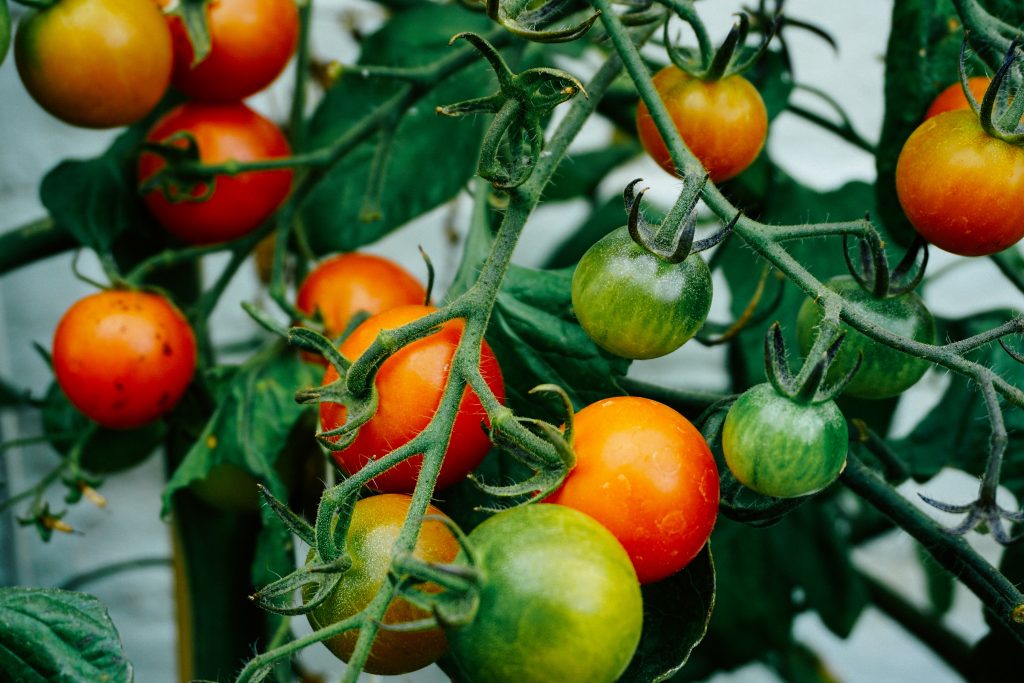
Table of Contents
Identifying Tomato Growing Problems
Generally you will know you have a tomato growing problem when things just don’t look right. Perhaps the tomato plant leaves are yellowing, or you see unwanted pests attacking the tomato fruit.
The first step is to identify the tomato growing problem and then administer the solution.
If the tomato plant is looking poor, firstly it’s a good idea to check if there is an insect invasion. If there is, are they of the aphid family or something else? You can treat most insect problems organically with a washing up liquid and water spray solution or by using horticultural neem oil spray.
If there is no apparent insect invasion, have a good look at the tomato plant and compare to healthy tomato plants. A healthy tomato plant should have green, slightly fuzzy-looking leaves. Any variation warrants investigation.
It helps to think about the part the plant that is affected to identify the causes. For example, is the growing problem affecting the leaves, the stem of the tomato plant or the fruit?
Once you have all the information you can gain from the tomato plants, you can easily check this list, narrow down the possible tomato plant disease or pest problem, and fix it.
Common Tomato Pests
Aphids – Greenfly, Whitefly
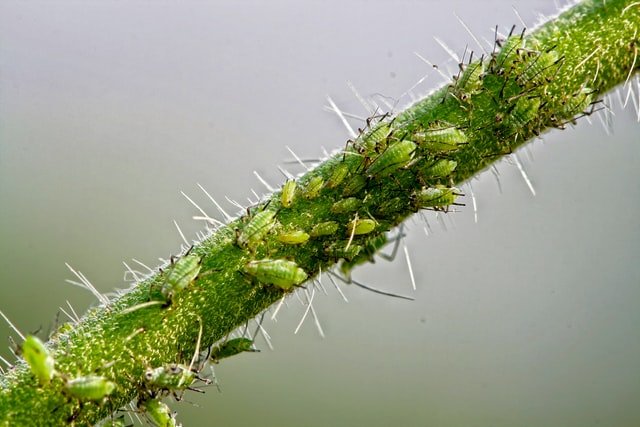
Identify: Small insects, usually under leaves. May be green, white or black.
Solution: Inspect your plants regularly. If there are low numbers, you can squash between thumb and forefinger when there is more infestation a simple washing up liquid diluted with water or use a garlic spray. Yellow sticky tapes can attract and trap them, but may also trap beneficial insects.
Caterpillars

Identify: They enter fruit at an early stage. The fruit continues to grow with the caterpillar developing inside as it ripens the fruit rots.
Solution: If this has been a problem in previous years, you could spray tomato plants with organic Bacillus thuringiensis or cover crops with fruit fly netting to prevent adult moths laying eggs on your tomato plants. Another option is to use individual fruit exclusion bags. I use organza bags like these. Simply tie the bags around the tomato fruit for protection.
Cutworm
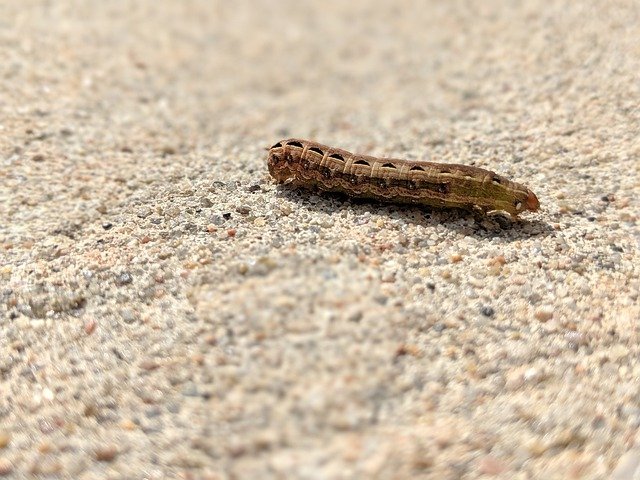
Identify: You find seedling stems chewed through in the morning.
Solution: Toilet roll centers cut in sections or other recycled material placed around the plant stem to create an effective physical barrier.
Fruit fly
Identify: White maggots found in ripening fruit, causing fruit to spoil and rot.
Solution: Clear all fallen plant matter from around the plants and remove any infected tomatoes. Harvest fruit as soon as ripe or ideally just before. You could cover crops with fruit fly netting or use fruit exclusion bags. I use organza bags like these. Simply tie the bags around the tomato fruit for protection.
Slugs & Snails
Identify: Large chew holes in fruit and leaves. Look for the mucus trail that they leave on leaves and soil.
Solution: Remove lower leaves and pick off and destroy any slugs or snails you see. Going out with a torch after dark is a good way to find them. If slugs are a big problem in your garden, then Nematodes are an excellent biological solution.
Stalk Borer/Stem Borer
Identify: You notice sudden unexplained dieback of the tomato plant; the stem is rotting and brown.
Solution: Caused by a slim purple and white striped caterpillar. They bore into the tomato stem and signs are a small secretion and tiny air holes further up the stalk. You could try pushing a pin through the stem in several places between the two to try and kill the larvae. Alternatively, if the problem is on a limb, sacrifice by removing the limb and destroying.
Another method to try and save your tomato plants is to cut the stalk open vertically with a sharp, clean blade and look for and remove any caterpillars from the stalk. The cut stalk will need taping if the plant is to have a chance of survival. Destroy infected plants at the end of the season in case there are eggs.
Colorado Potato Beetle
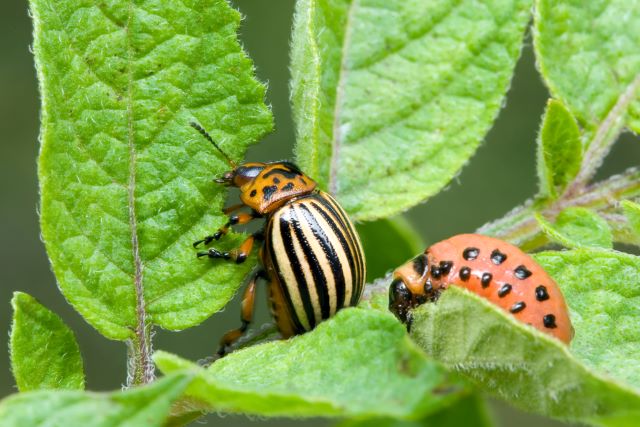
Identify: Often referred to simply as potato bugs, these voracious feeders will destroy leaves to the point of killing the tomato plant. Although they are mostly associated with potato plants, potato bugs also attack tomato, eggplant, and pepper plants as well as others plants.
Adult potato bugs look similar to ladybugs only they are yellow in color with a stripy body. Their heads are spotted. Their larvae, which do the most visible leaf damage, are reddish/orange with black-colored heads and legs and two rows of spots along the side of their bodies.
Solution: Natural methods include hand-picking the potato bugs, their larvae, and eggs. Using organic pesticides and companion planting are also excellent controls. Read more in our article: Getting Rid of Potato Bugs Organically: Colorado Potato Beetle.
Common Tomato Diseases
Anthracnose
Identify: Small soft, sunken mushy spots appear on ripening or ripe fruit. When you slice the tomato, a black mushy spot underneath the tomato appears to be rot. Anthracnose is caused by Colletotrichum fungus. Both green and ripe fruit, you won’t see symptoms until the fruit begins to ripen.
Solution: Most common on fruits near the ground as infection is frequently due to water splash from rain or when watering. Care with the placement of hose when watering helps prevention. Treatment is a mixture of sodium bicarbonate as recommended by USDA here:
“To create a solution that prevents and treats disease, add a heaping tablespoon of baking soda, a teaspoon of vegetable oil, and a small amount of mild soap to a gallon of water and spray the tomato plants with this solution. This needs to be reapplied regularly to maintain its efficiency. Garden clean-up is another preventative key, as the diseases’ spores can overwinter on plants left in the garden from the previous year.”
Kayla Harless 2017
Tomato Bacterial Canker
Identify: Yellow dots on ripening red tomatoes. Similar to cloudy spot disease. Use a magnifying glass; Bacterial Canker will have a dark, birds-eye-type rim around each of the yellowed spots.
Solution: A naturally occurring bacteria called Clavibacter michiganensis that you can accidentally bring into the garden on infected plants or tools. Once in the soil, rainwater splashes it onto the plant, it enters by any injury. Remove and dispose of infected plants immediately, don’t compost them. Avoid planting tomatoes in the soil for at least three years.
Tomato Bacterial Wilt
Identify: During hot weather the young leaves wilt, despite adequate soil moisture and no pests. Tomato plant remains green but wilts and dies rapidly.
Solution: There is no cure for the plant. To confirm infection, cut the stem at the plant’s base and suspend in water. If bacterial wilt is the cause this will release a white slimy substance. The only option is to lift and destroy the tomato plant immediately.
Tomato Blossom Drop
Identify: Your tomato plants flower, but the fruit doesn’t develop.
Solution: Prevention, the main causes are temperature fluctuations, occasionally nitrogen imbalance, lack of pollination, lack of water or insect damage.
Night temperatures need to be above 55oF (13C).
Check the nitrogen levels of soil and fertilizer.
If tomatoes are netted for pest prevention, you need to pollinate the flowers by hand.
Water tomatoes frequently.
Manage insects you see.
Tomato Blossom End Rot
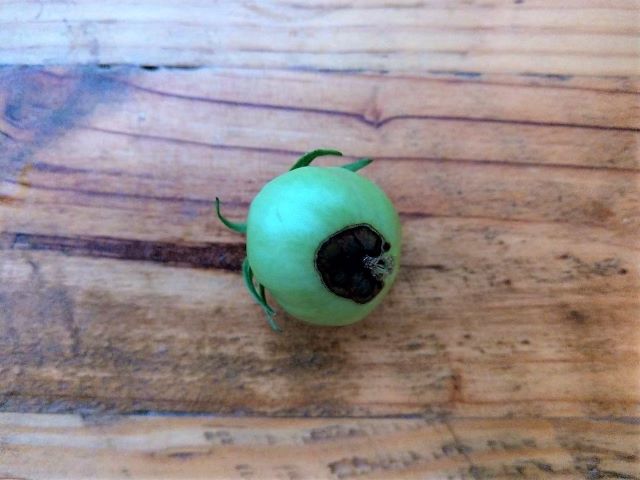
Identify: As the tomatoes ripen; a black scab like patch appears on the bottoms.
Solution: Either there’s not enough calcium in the soil, or the pH is too low for the plant to absorb the calcium available. pH for tomatoes is 6-6.5 to grow properly, including absorption of calcium. Erratic watering contributes to the problem. Hot and dry weather tend to increase the risk of blossom end rot. You can ensure adequate calcium by adding agricultural lime to the soil.
You can read more in our article: Tomatoes Rotting at the Bottom? (Blossom End Rot Explained).
Tomato Blight
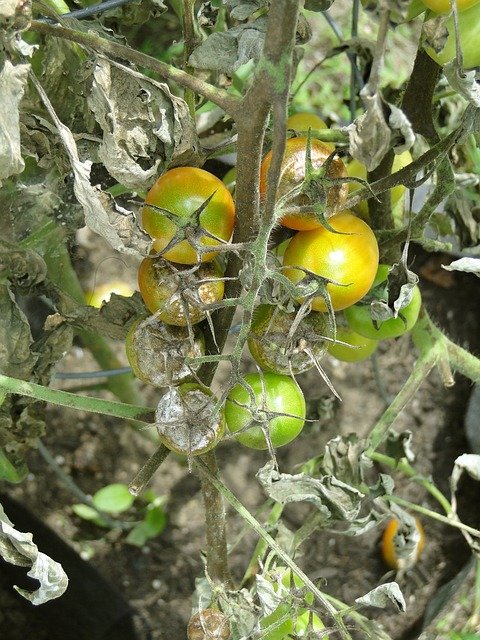
Identify: You first notice brown spots on older tomato leaves. The spots develop rings, like a target, the leaves turn yellow around the brown spots, then the entire leaf turns brown and falls off.
Solution: Caused by a fungus called Alternaria solani that lives in the soil over the winter. Fastidious cleanliness and crop rotation, avoid planting tomatoes, eggplants, potatoes or peppers in the same soil in the following years. Occasionally removing the infected leaves and early harvesting may save your crop.
Tomato Catfacing
Identify: Your tomatoes look deformed, the bottom is rippled or bumpy and lumpy.
Solution: Protect the temperature at night to above 55oF (13C). You may need to plant out later in the season; the cause is flowers that almost drop due to cooler temperature. Because the flowers don’t drop but are affected by the cold weather, abnormal tomatoes are the result.
Poor soil and even attach by Thrips may contribute to catfacing.
Cloudy Spot
Identify: Yellow uneven edged patches appear on the fruit. If you cut open the fruit, the corresponding area inside will be white.
Solution: Caused by stink bugs sucking the juice of the tomatoes. Growing garlic with the tomato plants will help to keep them away. The solution, once they are on your tomatoes, is a soapy water spray directly on the stick bugs. We have a Soapy Water Spray recipe we use on stink bugs here.
Tomato Fruit Cracks
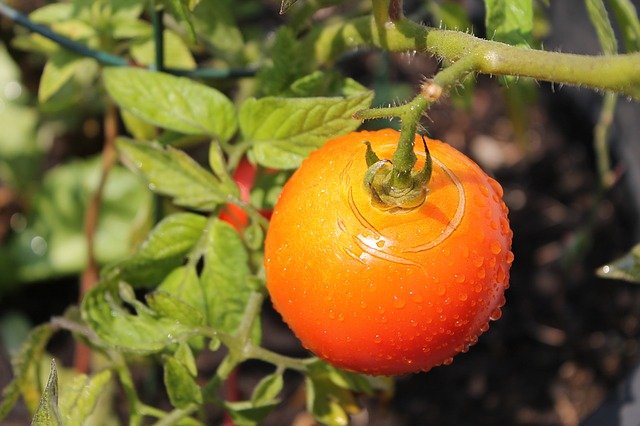
Identify: Cracks on ripe tomatoes.
Solution: Caused by rain during hot weather or overwatering after underwatering. The sudden extra water causes the tomato to stretch and swell, and the skin cannot stretch enough.
Prevent tomato cracks by regular, consistent watering. Pick tomatoes and use as quickly as possible.
Another cause is over-fertilizing the plants and the solution is to follow fertilizing instructions carefully.
Tomato Fusarium Wilt
Identify: The leaves start to wilt and turn yellow, brown, black and wilt; it works up the stem of your plant. Eventually, the stems turn brown, wilt and may die.
Solution: Regular watering is key to avoiding a lot of problems. If you water thoughtfully and regularly and maintain the pH to 6-6.8, your plants will be healthier and less susceptible to any diseases.
You can confirm Fusarium wilt by cutting open the stem; if its pink-brown discoloration fusarium is the problem. Mulching your plants to cool the soil can slow the symptoms and save the crop.
Tomato Mosaic Virus
Identify: Blotches on the leaves that are light and dark green. Sunken brown patches under the fruit skin.
Solution: Mosaic virus is a viral disease that affects many plants; there is no cure. A good option to avoid it is to grow disease-resistant varieties. If your tomatoes do suffer mosaic you should lift and dispose of them, do not compost them. Keep everything clean to avoid cross-contamination by sterilizing tools and washing hands. Pine oil is a good option for this; mix one-part pine oil to three parts water and soak your tools in the solution for thirty minutes. Always avoid replanting in the same soil.
Tomato Powdery Mildew
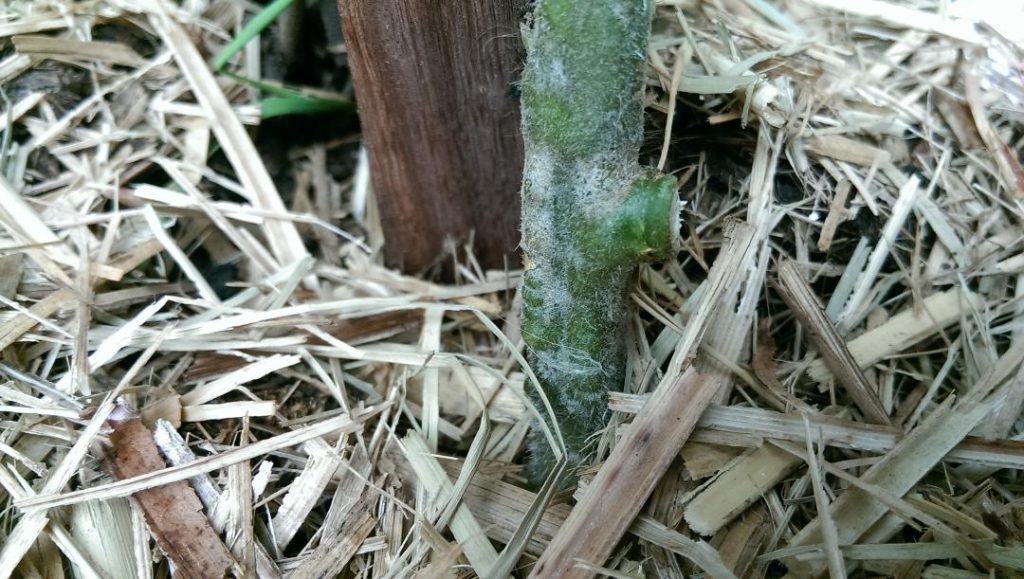
Identify: A relivitly common fungus diseas that looks like powdery white or gray spots. Powdery Mildew can be found on the tomato plant’s leaves, stems, flowers and fruit.
Solution: Ensure adequate growing space between plants to allow for good air-flow. Water the ground and not the tomato plant leaves and use a milk and water spray solution which acts as a natural fungicide. You can make this DIY milk spray easily here.
Tomato Septoria Leaf Spot
Identify: Small yellow spots that turn brown with a black spot in the centre that start at the lower leaves moving up your tomato plant. If you leave it the leaves turn yellow then brown before falling off.
Solution: Always regularly remove and destroy infected material. Create airflow by keeping weeding at bay and careful pruning of some leaves.
Tomato Target Spot
Identify: Brown to black spots with a series of concentric circles first appear on lower leaves, eventually spreading.
Solution: Remove and destroy infected material.
Tomato Verticillium Wilt
Identify: Symptoms are similar to Fusarium Wilt above. You will notice the lower leaves dry out and wilt first. The whole plant may die.
Solution: Remove and destroy infected plants. Avoid replanting in the same soil. Subsequent growing in containers often proves successful.
Tomato Viral Disease
Identify: You notice black spots or unexpected stripes on the tomatoes.
Solution: Usually occur due to stress by drought, heat or poor soil. Remove and dispose of the tomato plants to avoid spreading to other plants.
Prevention of Tomato Growing Problems
Many of these problems seem impossible to avoid but there are a few steps you can take to give your tomato plants the best chance to thrive.
Careful Watering
Water the soil being careful not to splash the plants.
Give Tomato Plants Space
Give tomato plants more growing room than you first think. Plenty of growing space will allow air movement around them and ensure they get plenty of light.
Mulch
Mulch to prevent soil splash when you water, which helps prevent fungus from getting onto leaves.
Plant Tomatoes in a Raised Bed
By planting tomatoes in raised beds, pots or containers, the drainage is improved and this prevents diseases from spreading. We have an article on growing tomatoes in pots here.
Remove and Destroy Diseased Tomato Plants
Stop the spread of disease by removing diseased tomato plants and destroying them.
Practice Crop Rotation
Carefully plan your vegetable garden to maintain a three-year rotation of tomato planting.
Select Disease Resistant Tomato Varieties
By selecting diseases resistant tomato plant varieties you will be increasing the chance of plants remaining disease-free.
Alkaline Soil
If soil is too alkaline, it can be improved with ground rock sulphur and well rotted-compost. Recheck the pH frequently. You can also use coffee grounds to acidify the soil. As well as using a pH meter it can be identified by visual inspection: You notice green veins and the leaves are tinted yellow or white, between veins. Mainly, but not always, on new tomato leaf growth.
Tomato Plant Nutrient Deficiencies
Calcium
Description: The same as blossom end rot or darkening at the base of the fruit. You may also see the base of the leaves have turned brown.
Solution: An application of agricultural lime water in well to correct the deficiency.
Iron
Description: Yellowing of the tissue between the leaf veins or pale yellow leaves. Usually affects the younger leaves.
Solution: The first option is to check your soil pH as it may be a sign of alkaline soil. Iron deficiency benefits from a foliar spray (liquid spraying the leaves) of iron chelates that will green up the leaves. Elemental Sulfur may help by lowering the pH.
Nitrogen
Description: Stunted growth, the younger leaves turn pale green, and older leaves are yellow.
Solution: A single application of a high N organic fertilizer at no more than the recommended level.
Phosphorus
Description: Stunted growth. The underside of leaves have a purple tinge.
Solution: Check your soil pH, when it is too high or too low phosphorus is unavailable. You can apply blood and bone to raise the pH.
Potassium
Description: Brown scorching on the leaf margins and yellowing between the leaf veins. The ripening tomatoes are blotchy.
Solution: To quickly add potassium, dress the soil with Kelp or other seaweed types that are quickly absorbed into the soil, you can also add as a foliar feed for extra effectiveness. Foliar feeding tomatoes means to liquid feed the foliage. Using well-rotted manure can prevent potassium deficiency.
Conclusion
Although this list is comprehensive, it’s unlikely you would have more than a couple of tomato growing problems to contend with in one season. So please rest assured that growing tomatoes is rewarding! Tomatoes are a relatively easy crop to grow, incredibly satisfying and the flavour of freshly picked sun-warmed tomatoes is divine.
The main things to remember are checking the soil’s pH, water mindfully and regularly, watering the soil, not the plants, and keeping a careful watch out for insects, slugs, and snails. Growing disease-resistant varieties and rotating your crops also go a long way towards ensuring healthy tomatoes that you can enjoy with your family and friends.
Recommended Products:
- Soil pH Monitor
- Garden Lime Soil Amendment
- Organza Exclusion Bags
- Seaweed Fertilizer
- Tomato Cages
- Tomato Fertilizer
- Horticultural Neem Oil
Related Reading:
- Tomatoes Flowering But Not Producing Fruit? Causes and Solutions
- 7 Reasons Your Tomatoes are Small (With Solutions!)
- How To Grow Tomatoes In Pots
- Best Tomatoes To Grow in Pots
- Determinate and Indeterminate Tomatoes: What Are They?
- How to Ripen Green Tomatoes Indoors: Five Easy Methods That Work
- Tomato Seedling Leaves Turning Yellow: Causes and Solutions
- Brown Spots On Peppers: Causes And Solutions

